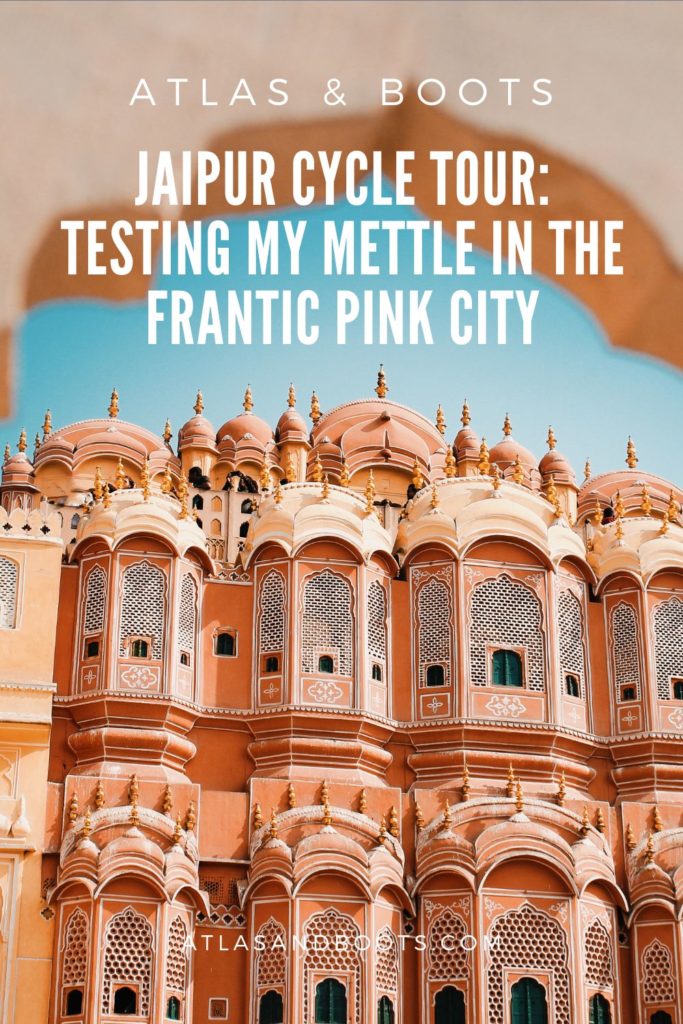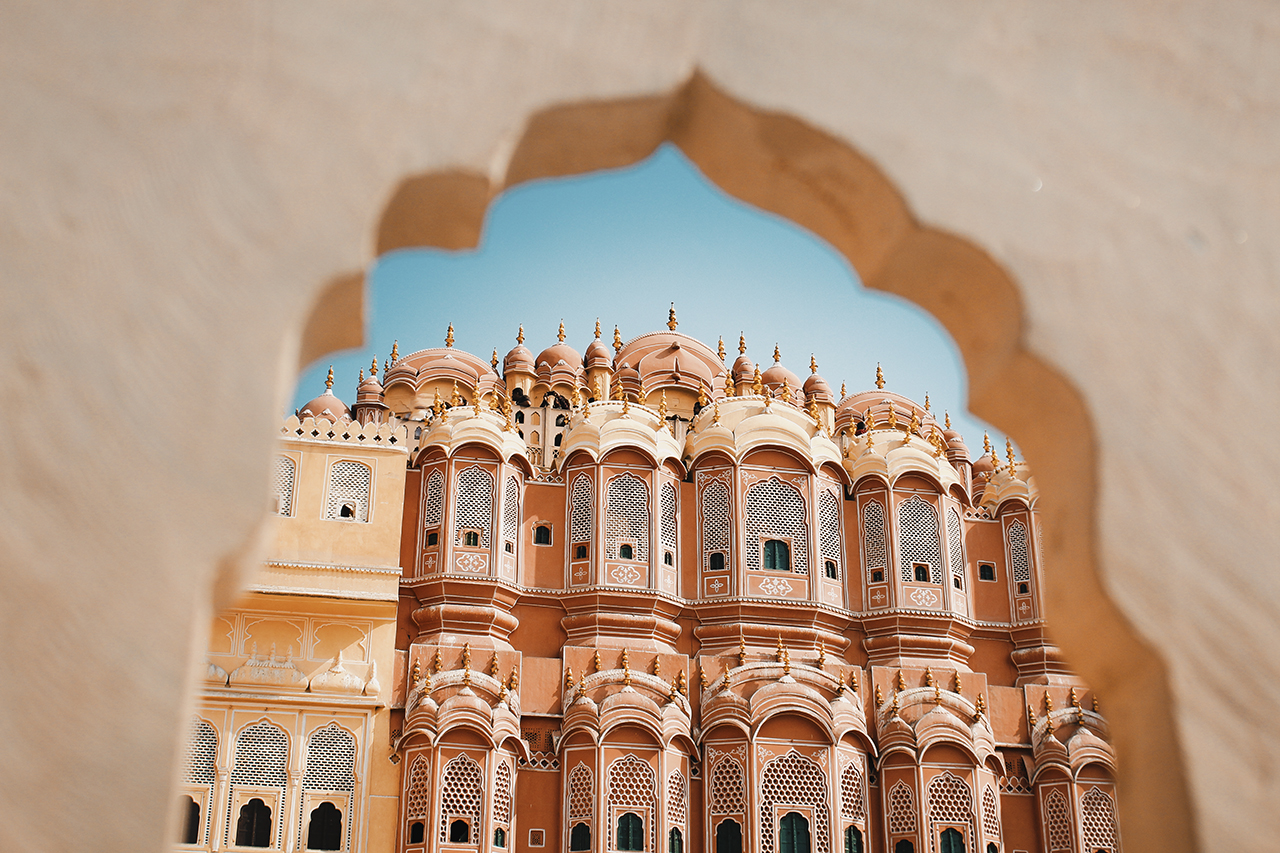The Jaipur Cycle Tour is not for the fainthearted – but is it worth the panic? Kia finds out
The legend of Jaipur is that it’s India’s first planned city. Historians will tell you that its founder – scholarly prince Maharaja Sawai Jai Singh II – was passionate about astronomy, mathematics and science, that he studied European cities and collected maps from all over the world.
They will tell you that he and esteemed architect Vidyadhar Bhattacharya planned every detail of the city, from the orientation of the gates to the script above each building – all based on Vastu Shastra, an ancient Hindu architectural system that incorporates nature, sunlight and symmetry.
That is the legend of Jaipur. And then there’s the reality. The reality is that you can plan a city to perfection, you can build a grid of streets to exact 110ft measurements, and ring that grid with 20ft-high walls – but you can’t control what fills these streets once you have finished.
What fills the streets of Jaipur is teeming traffic, dense crowds, overzealous traders, barking dogs and wayward cows. The famed pink of the Pink City is actually a murky terracotta thanks to an 1876 visit from the Prince of Wales when the city was repainted as a sign of hospitality and to absorb the glaring sunlight.
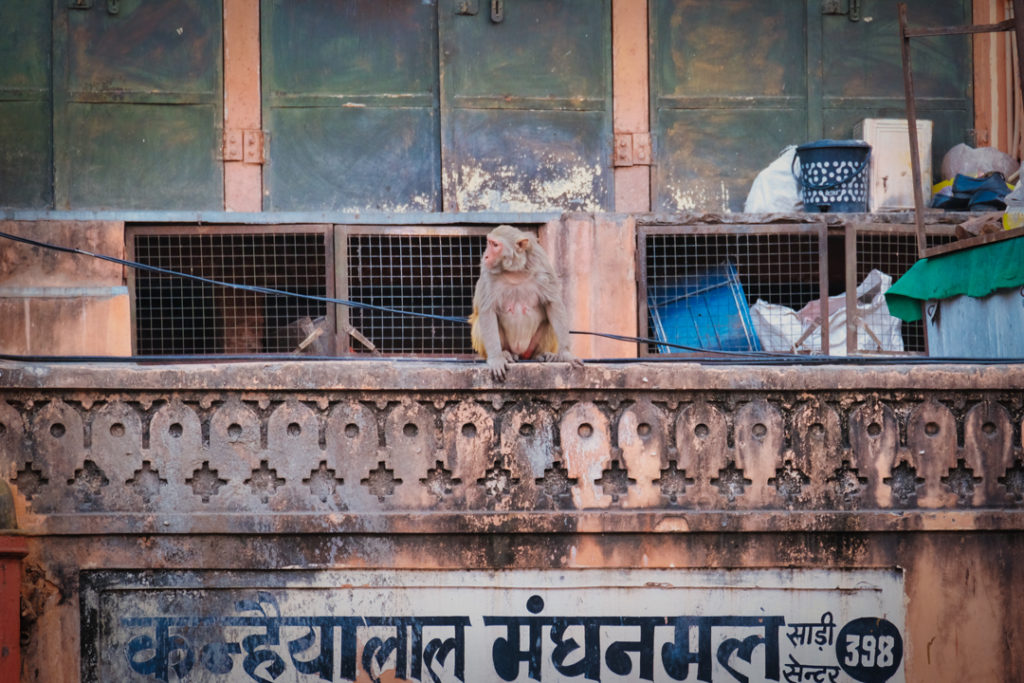
So, at the risk of sounding like an ingrate tourist, there is quite a chasm between the legend and the reality of the famed Pink City. You’ll understand my trepidation, then, when I was faced with the prospect of a three-hour Jaipur Cycle Tour.
My lack of cycling skills has been well documented here at Atlas & Boots. In short, I only learnt to ride at the age of 28 and have fallen off my bike in some of the most beautiful places in the world – among them, Bora Bora, the Galápagos and Cambodia, the last of which has left me with literal scars.
As such, I was understandably apprehensive about the Jaipur Cycle Tour. Offered as an optional activity on our G Adventures Essential India tour, it was easily avoidable. It was only when our guide told me that previous guests had raved about the tour that I agreed to go.
Our group gathered outside our hotel in the predawn darkness to meet our cycling guide. The 6am start was strategic; it allowed us to explore Jaipur before the real hubbub set in. After a short transfer by taxi, we arrived at the shop where we were given our bikes and helmets. As the other members of my group tested their bikes with whirls and circles, I set off in a wobbly straight line. It’s true that you don’t forget how to ride a bike, but you can certainly look like a clown on one.
I recognised the frown on our lead guide Raghav’s face. It’s the same frown I saw on Chit, the guide on our 13-day cycling tour of Myanmar in 2017. I beamed at Raghav as if the wattage of my smile could hide my lack of cycling skills. He turned and issued instructions to another guide – to keep a close eye on the dunce, no doubt.
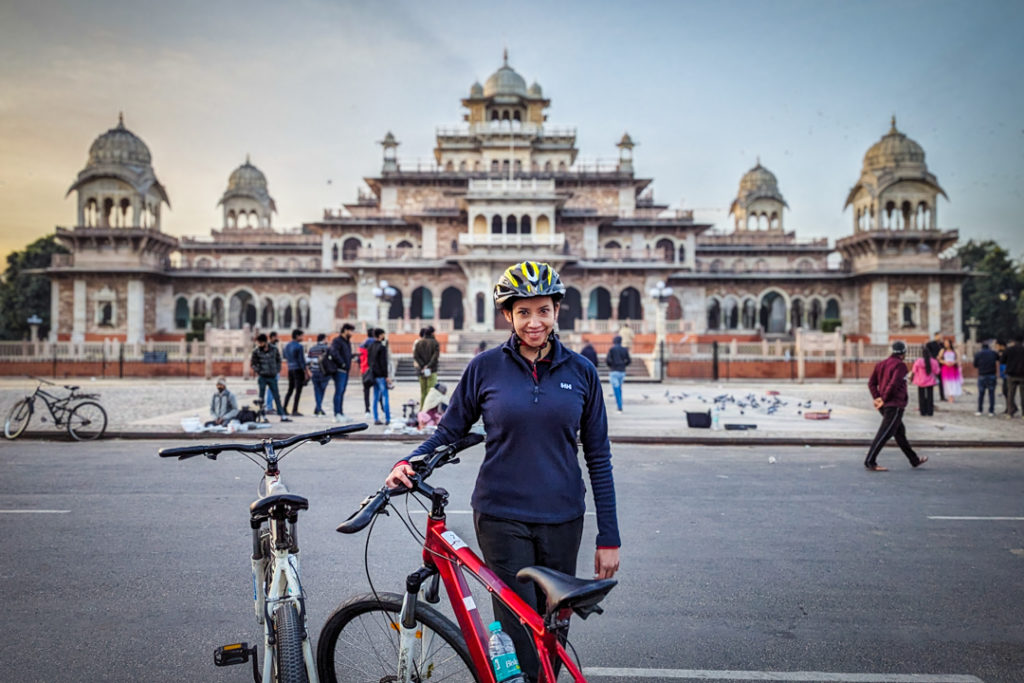
We set off into the still-dark. Sure enough, one of the secondary guides pedalled closeby, going wide every time an obstacle neared. I was thankful to have him there. One thing I had noticed about Jaipur, and indeed India, is that there’s an implicit trust that motorists, pedestrians and animals will get out of each other’s way. Sometimes, you have to play chicken, sometimes you have to give way, but everything more or less falls into place.
What the other road users didn’t know, however, is that I was still a relative newbie and I couldn’t swerve and escape with mere inches to spare. As such, I found my knuckles whitening as I gripped the handlebars and wobbled around various obstacles. I was thankful when we stopped, first to feed some street cows and then to try the best masala chai that we had in all of India.
Soon, it was time to get back on our bikes. Dawn had broken and the traffic was beginning to thicken. Thankfully, it wasn’t long before we turned off onto a mall leading to the picturesque Albert Hall Museum. No cars were allowed here and I relaxed my grip on the handlebars, letting myself remember that this was supposed to be fun. We paused to take some pictures and then cycled on to Jai Niwas Garden.
Here, we joined a public yoga session – only it wasn’t yoga as most of us westerners knew it. Standing in a large circle, we copied the instructor as he moved his right arm in a pulling motion while making a sound that I can only describe as a yawp. He and his students repeated the motion a dozen times while we cyclists followed suit, somewhat bemused.
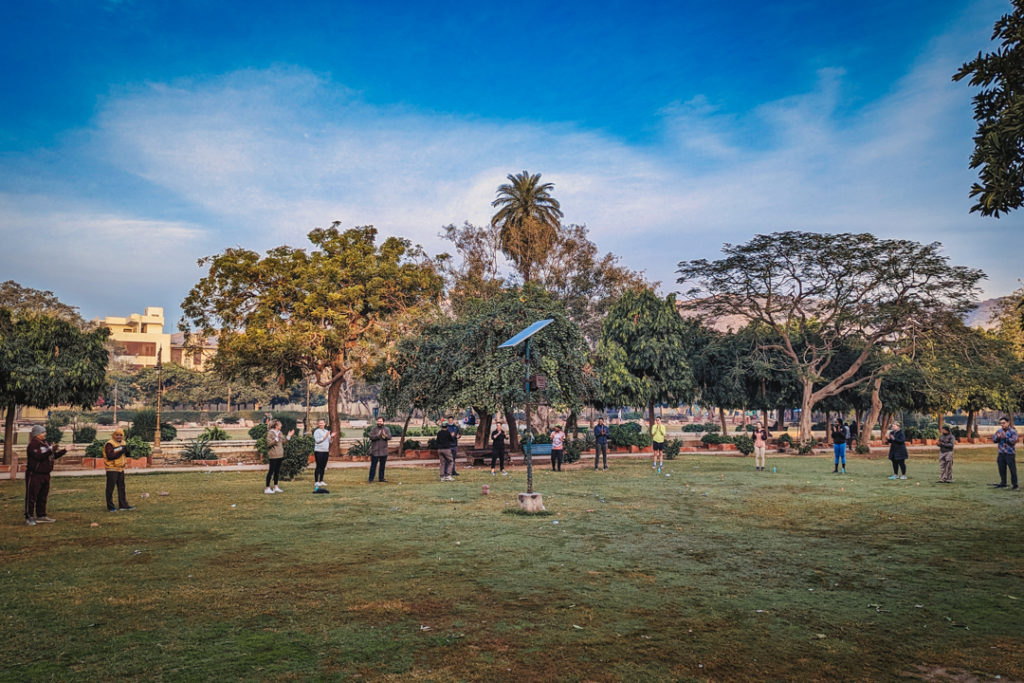
There followed a series of moves that had us questioning if we were being filmed in some sort of prank on tourists. We squatted and shouted in a Haka-like chant, we stuck out our tongues and cried out loud. Our instructor bent forward and bellowed with hearty but fake laughter – and we followed suit.
Then, something strange happened. Our fake laughter became real… and then joyous. Evidently, there was something about the act – the absurdity but also the sense of community – that spoke to us on some deep, metaphysical level. There was, it seemed, method in this madness after all.
Fittingly, our next stop was spiritual: Thikana Mandir Sri Govinddevji where we observed a puja ceremony in which hundreds of Hindus gathered to pray. Afterwards, we paused to enjoy a mini-brunch of hot samosas – the best we had in all of India.
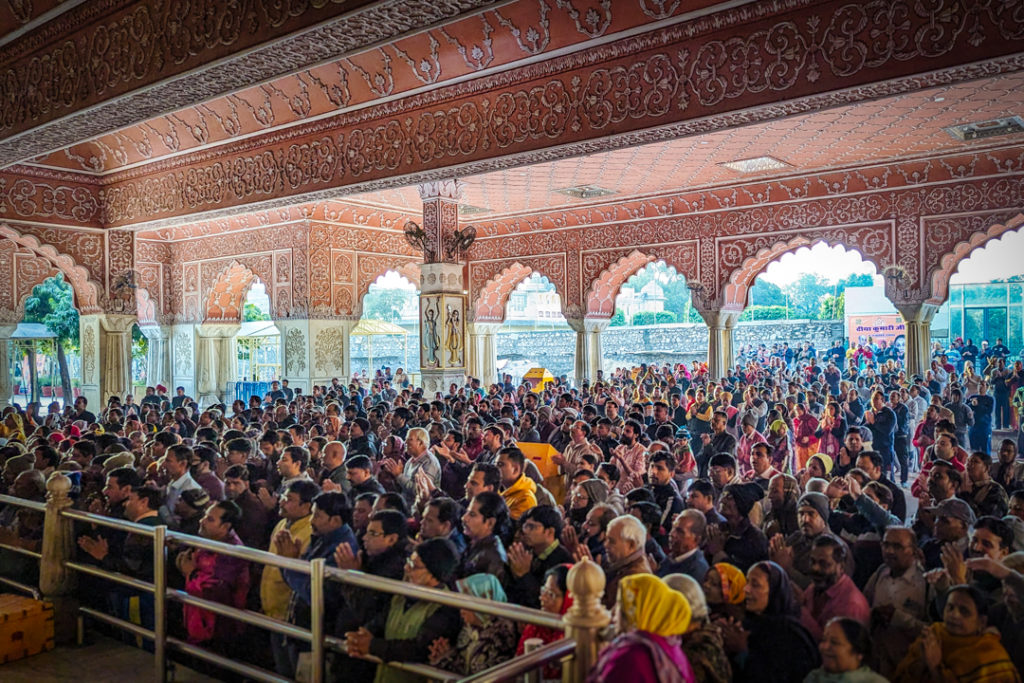
At this point, I was thoroughly invigorated but next came the real challenge of our Jaipur Cycle Tour: negotiating the now fully-awake streets. We headed into the fray and though I tried to remain calm, I came too close for comfort to one pedestrian, one dog, one cow and several motorists. Somehow, as is the rule of Jaipur, everything more or less fell into place.
Peter would later tell me that, in watching me skirt around obstacles, his heart rate monitor hit a new high. This from the man who scales mountains in his spare time and has been training for hours every day for his Denali climb.
Needless to say, by the time we arrived at Gangori Bazaar – a flower and vegetable market – I was ready for a break. We wound through the narrow walkways, making way for women who carried up to 100kg of goods on their heads. We sampled some fruit and snacks and were soon on our way to our final stop: Lassiwala Kishan Kal Govind Narain Agarwal, which is said to be the oldest lassi stall in the city.
With a healthy dose of radhes, I made it back to the bike shop, feeling thoroughly elated – that is until I bumped to a stop against a heavy wooden door.
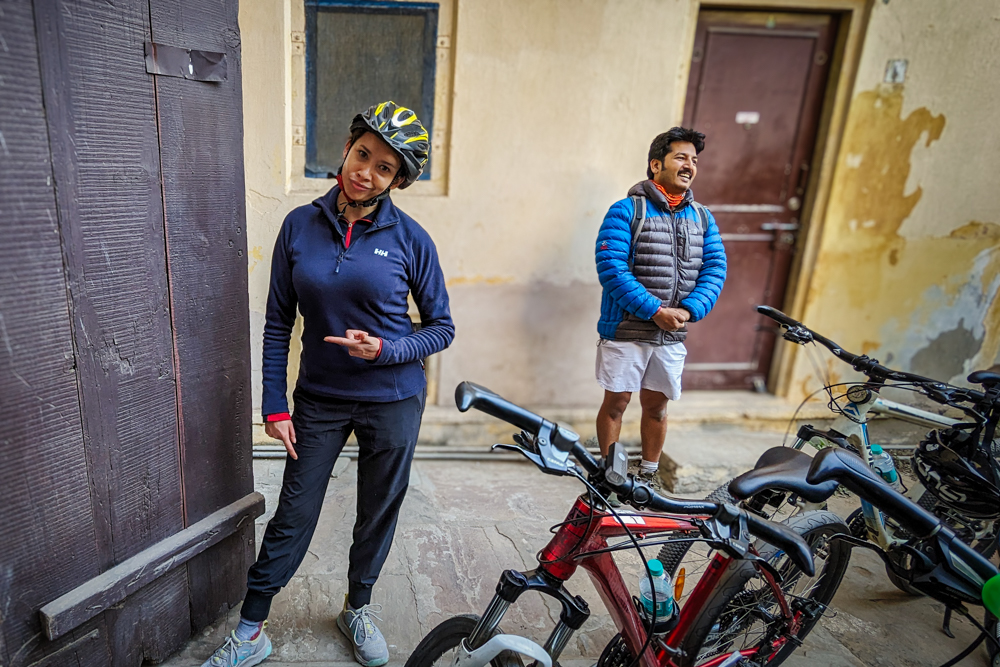
“That’s one way to brake,” said Raghav, laughing. I laughed too. I had fallen at the final hurdle but it was okay. I made it back in one piece and had one of the most memorable experiences of our entire trip. To see this famous city at street level, to brave the traffic and chaos, to eat and drink some of the country’s best produce and meet some interesting locals was an experience second only to the Taj Mahal. It seems that, like the zany yoga, there is method in the madness of Jaipur after all.
Jaipur Cycle Tour: the essentials
What: The Jaipur Cycle Tour, an optional activity on our 15-day Essential India tour with small group specialists G Adventures.
Where: Accommodation on the tour includes basic but functional hotel rooms, one night of glamping, one night at an ageing but charming palace, and one night on an overnight train with open compartments.
When: The best time to visit India is December to March when the weather is dry and warm but not searing (evenings can be chilly, so do pack a fleece and jacket). This is peak tourist season, however, so you may prefer to go in April to June, especially if you can handle the heat.
How: We went on the Jaipur Cycle Tour as part of a 15-day Essential India tour with G Adventures. The cycling tour costs £28 ($35 USD) while the overall tour starts at £1,099 ($1,390 USD) per person and includes a Chief Experience Officer throughout, all accommodation, transport between destinations, some meals and numerous activities including walking tours of Delhi and Jaipur, the Taj Mahal, the Chand Baori stepwell, the Khajuraho Temples, a number of puja ceremonies and the ghats of Varanasi.
Optional activities include a balloon ride over Jaipur, a cooking lesson in Orchha, a screening of a Bollywood film and a heritage walk in Varanasi among others. We did all the optional activities except the balloon ride and highly recommend them.
For more information or to book, call +44(0)207 313 6953 or book online.
We recommend getting a Holafly eSIM for India so you can stay connected to the internet on your trip. We can offer our readers 5% off Holafly purchases. Simply use the code ATLASANDBOOTS at checkout.
We flew to India with British Airways. Book flights via Skyscanner for the best prices – and don’t forget to check visa requirements!
Enjoyed this post? pin it for later…
